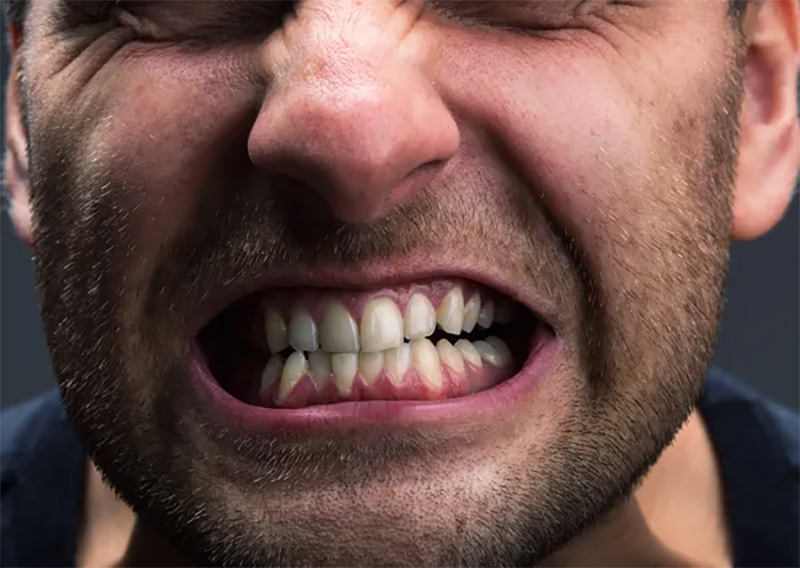Amid the COVID-19 pandemic is another pandemic of broken teeth, according to many dentists.
Mental health has been and is still affected by the threat of the virus. An increase in bruxism behaviours has been reported, along with an increase in the symptoms of TMJ.
Generally there has been 36% increase in the treatment of pain in the TMJ and facial muscles, with almost 50% of sufferers experiencing more frequent headaches and migraines.
This increase in psychosocial distress as a result of the existence of COVID-19 affects the frequency of teeth-grinding symptoms and behaviours, which in turn, constitute a triangle of mutually interacting factors influencing people’s psychological and emotional status.
More than a third of dentists feel professionally confident and prepared to practice within the new pathogen paradigm COVID-19 demands. Few have not had to make financial adjustments and hard-line decisions in order to persevere with PPE stock, extra regulations and protocols, increased patient anxiety and longer treatment times because appointment consistency has been lost. Patients who are now presenting with stress related symptoms of teeth grinding, are often having to deal with gum disease as well; the result of the chronic inflammation of a stress-impaired immune system.
At best, dentistry is a highly stressful occupation. And these caring professionals have personal lives too – filled with the pressures and anxieties we are all experiencing in varying degrees in the navigation of this brave new world.
COVID-19 teaches us what we can live without; and what we most certainly can’t live without is proper dental care. It doesn’t matter whether it’s a routine check-up or a consultation with the option of using All On 4 dental implants, maintaining good oral health is the best framework on which to set your general wellbeing.
Show gratitude for the support your dentist has always given you by supporting them. Make that dental appointment. Be flexible and accepting of possible date or time changes and necessary infection control routines that may be new to you.
Be human. None of what we’re living through and living with, is easy. We can chew the fat all day about that and it’s much easier to do with teeth.
COVID-19 has drastically changed and challenged the provision of health and dental services. Even with the easing of lockdowns, dental clinics were still considered risky, particularly among vulnerable populations.
Victorian president of the Australian Dental Association Dr Jeremy Sternson has seen record numbers of patients with broken fillings. Cracked teeth and excruciating jaw pain is the result of bruxism – excessive grinding or clenching of teeth. Big-city life is showing a growth in anxiety treatment services.
Surprisingly, temporomandibular disorders and bruxism were not included under the definition of an emergency dental situation, which left many patients without the possibility of treatment.
In Victoria, public health waiting lists for dental care, which provide treatment to some of the most vulnerable people, including pensioners and those in aged care, have also blown out. Patients in some parts of the state now must wait between eight months and three years for an appointment.
“It has blown out ridiculously,” Sternson said. “We are all crazy-busy.”
Data obtained under Freedom of Information Act reveals waiting times for general dental care have increased on average to just over 2 years; the worst delays in a decade.
Getting dental news out there into mainstream media means letting people know that unlike oral pathologies that require physical intervention, chronic orofacial pain can be addressed at its initial stage through teledentistry and consultation. There are various remote treatments available via phone or internet that alleviate orofacial pain, including self-massaging tense and painful areas, stretching, thermotherapy, as well as relaxation, meditation, and mindfulness techniques.

